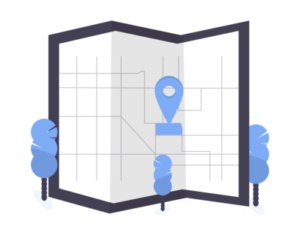No products in the cart.
What is a newsletter and why is it important for customer engagement?
Newsletters play a vital role in effective customer engagement by serving as a direct and personalized communication channel between businesses and their customers. A newsletter is a regular publication that is sent via email to a subscriber list, providing valuable and relevant content to the audience. It allows businesses to share updates, promotions, and exclusive information with their customers, keeping them informed and engaged. Newsletters also enable businesses to build and nurture relationships with their audience, fostering loyalty and trust. By delivering tailored content directly to the inbox, newsletters provide a unique opportunity for businesses to connect with their customers on a deeper level and create a sense of community.
Benefits of using newsletters for customer engagement
Using newsletters for customer engagement offers several benefits that can greatly enhance your business’s relationship with its customers. Firstly, newsletters provide a direct and personalized way to communicate with your audience. By delivering valuable content and updates straight to their inbox, you can establish a sense of trust and loyalty. Additionally, newsletters allow you to segment your customer base and send targeted messages, ensuring that each recipient receives relevant information tailored to their needs and interests. Moreover, newsletters can serve as a powerful marketing tool, as they provide an opportunity to promote new products, services, or special offers. By consistently delivering high-quality content and fostering a sense of community, newsletters can effectively drive customer engagement and ultimately lead to increased sales and customer satisfaction.
How to create an engaging newsletter
Creating an engaging newsletter is key to establishing a strong connection with your customers. It starts with understanding your audience and tailoring the content to their interests and needs. Including personalized greetings and using a conversational tone can make your newsletter feel more friendly and approachable. Visual elements such as eye-catching images and clear call-to-action buttons can enhance the overall appeal and encourage readers to take desired actions. Additionally, providing valuable and relevant information, such as exclusive offers, industry insights, and helpful tips, will keep your subscribers eagerly anticipating each newsletter. By consistently delivering high-quality content and fostering a sense of community, you can create a newsletter that not only engages your customers but also strengthens their loyalty to your brand.
Choosing the right content for your newsletter
Choosing the right content for your newsletter is a key factor in achieving effective customer engagement. A well-crafted newsletter can provide valuable information, updates, and offers to your subscribers, keeping them informed and interested in your brand. It is important to understand your target audience and tailor the content to their interests and needs. By providing relevant and engaging content, you can establish yourself as a trusted source of information and build a strong relationship with your customers. Additionally, including visually appealing elements such as images and videos can enhance the overall experience and capture the attention of your readers.
Designing an attractive and user-friendly newsletter
Designing an attractive and user-friendly newsletter is key to effective customer engagement. A visually appealing layout, with a clean and organized design, will capture your readers’ attention and encourage them to explore the content. Utilizing eye-catching colors, fonts, and images that align with your brand identity will make your newsletter stand out from the competition. Additionally, ensuring that your newsletter is easy to navigate and mobile-responsive will enhance the user experience, allowing your customers to effortlessly access the information they need. By focusing on these design elements, you can create a newsletter that not only grabs attention but also keeps your customers engaged and interested in your brand.
Personalization and segmentation in newsletters
Personalization and segmentation are key components in creating effective newsletters that engage customers. By personalizing newsletters, businesses can tailor their content to each individual recipient, increasing the likelihood of capturing their attention and driving action. Segmentation allows businesses to divide their audience into smaller groups based on demographics, interests, or behaviors, enabling them to send targeted messages that resonate with specific segments. This approach not only improves the relevancy of the content but also enhances the overall customer experience. By harnessing the power of personalization and segmentation, businesses can build stronger relationships with their customers and achieve higher engagement rates in their newsletters.
The importance of a strong call-to-action in newsletters
A strong call-to-action is a vital component of an effective newsletter and plays a significant role in engaging customers. It not only grabs the reader’s attention but also motivates them to take the desired action. Whether it’s encouraging them to make a purchase, sign up for an event, or share the newsletter with their friends, a compelling call-to-action can significantly increase customer engagement and drive conversions. By using persuasive language, creating a sense of urgency, and offering exclusive incentives, newsletters can effectively guide customers towards the desired outcome and foster a deeper connection with the brand.
Tips for increasing open rates and click-through rates
Increasing open rates and click-through rates are key to the success of newsletters in engaging customers. One effective tip is to personalize the subject line and content to grab the reader’s attention. By addressing the reader by name and tailoring the content to their interests and preferences, they are more likely to open the email and engage with the content. Another tip is to optimize the email for mobile devices, as a significant portion of subscribers access their emails on smartphones. Ensuring that the email is visually appealing, easy to read, and has a clear call-to-action will encourage readers to click through and explore further. Implementing these strategies will not only increase open rates and click-through rates but also foster a stronger and more valuable connection with customers.
Analyzing and measuring the success of your newsletters
Analyzing and measuring the success of your newsletters is a critical aspect of effective customer engagement. By tracking key metrics such as open rates, click-through rates, and conversion rates, you can gain insights into the performance of your newsletters and make data-driven decisions to optimize future campaigns. Additionally, analyzing subscriber behavior, such as the types of content they engage with and the frequency of their interactions, can help you tailor your newsletters to better meet their needs and preferences. By continuously evaluating and refining your newsletter strategy, you can ensure that you are delivering valuable and engaging content to your audience, ultimately driving customer loyalty and business growth.
Conclusion: The role of newsletters in effective customer engagement
Newsletters play a vital role in effective customer engagement, providing businesses with a direct and personalized way to connect with their audience. By delivering relevant and valuable content directly to subscribers’ inboxes, newsletters allow businesses to build and strengthen relationships with their customers. They provide a platform to share updates, promotions, and exclusive offers, keeping customers informed and engaged. Additionally, newsletters can be used to gather valuable insights and feedback through surveys and polls, allowing businesses to better understand their customers’ needs and preferences. In conclusion, newsletters are a powerful tool for fostering customer loyalty and creating meaningful connections that drive business growth.



